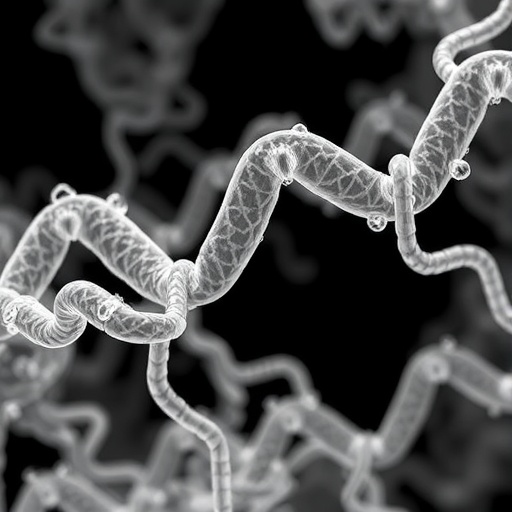In recent years, the intersection of enzymatic processes and signal processing technologies has emerged as a fascinating area of research, promising to unlock new avenues for both computational and biological sciences. The latest breakthrough in this field comes from the innovative work of R.F. Cinar, who has developed an enzyme action optimizer that utilizes infinite impulse response (IIR) filter identification. This groundbreaking method was rigorously benchmarked across varying orders of complexity, leading to substantial improvements in modeling and simulation of enzyme kinetics, an area critical to fields like bioinformatics, systems biology, and computational modeling.
The core of Cinar’s research revolves around the application of IIR filters as a tool for identifying and optimizing enzyme action. Traditional methods for analyzing enzyme kinetics often struggle with noise and complexity, leading to inaccurate models that can hinder the broader understanding of biochemical processes. Cinar’s innovative approach employs a unique optimizer that fine-tunes IIR filter parameters to match enzymatic behavior more precisely, thus enhancing the reliability of kinetic modeling.
Enzymes, which are biological catalysts that speed up chemical reactions, play a pivotal role in numerous biological processes and industrial applications. Understanding their behavior is paramount for biotechnological advancements. Cinar’s research seeks to refine this understanding by leveraging computational techniques, enabling more accurate predictions and analyses of how enzymes react under varying conditions. This could significantly impact pharmaceuticals, agriculture, and environmental management where enzyme applications are critical.
A notable aspect of Cinar’s findings is the comprehensive benchmark he executed, which involved comparing the performance of both full-order and reduced-order models. This analysis is crucial since it reveals how an optimizer can maintain accuracy while simplifying the model. By reducing the model’s order without sacrificing predictive power, Cinar’s method could pave the way for faster computations that are essential for real-time data analysis in dynamic systems.
The implications of employing IIR filters in enzyme kinetics are vast. Traditional identification methods often rely heavily on linear assumptions, which can lead to significant oversights in non-linear enzymatic reactions. Cinar’s approach allows researchers to delve deeper into the actual behavior of enzymes within complex biological pathways, where interactions often exhibit non-linear characteristics. As a result, this advancement contributes directly to the field of systems biology, where understanding these interactions is fundamental.
One of the significant advantages of the enzyme action optimizer is its flexibility. The method can be tuned to cater to specific enzymes or biochemical pathways, which means that it is not merely a one-size-fits-all solution but rather a tailored approach to enzyme characterization. This personalized touch enhances the optimizer’s effectiveness, allowing researchers in various domains to employ it in their unique studies and applications.
Moreover, the potential for integration with existing computational tools cannot be overstated. Cinar’s optimization technique can be seamlessly incorporated into existing computational frameworks, thus providing researchers with enhanced capabilities without the need for extensive overhauls in their current methodologies. This ease of integration can accelerate the adoption of advanced modeling techniques within research labs, potentially leading to quicker breakthroughs in enzyme-related discoveries.
Cinar’s study also stresses the importance of collaboration between computational scientists and biochemists. The intricate nature of enzyme kinetics demands interdisciplinary efforts where computational methods are informed by experimental data. By presenting a robust framework for enzyme action optimization, Cinar sets the stage for future collaborations that could yield even more profound insights into biochemical processes.
In addition to the scientific implications, Cinar’s work opens up new pathways for educational outreach in the fields of bioengineering and computational biology. As researchers begin to adopt this innovative approach, educators can utilize the findings to develop curricula that align with modern techniques in enzyme kinetics, ensuring that the next generation of scientists is well-versed in cutting-edge technologies.
Furthermore, this research addresses a pressing need within the scientific community for tools that increase both the robustness and the accessibility of enzymatic modeling. Current models often face criticism for being either too complex or too simplistic, leading to a gap in understanding that Cinar aims to bridge.
The potential applications of Cinar’s enzyme action optimizer extend beyond academia into industries where enzymatic processes play crucial roles. For instance, in pharmaceuticals, the ability to predict enzyme behavior accurately can lead to more effective drug designs and faster development cycles. In agricultural biotechnology, optimized enzyme models can facilitate the development of bio-fertilizers that enhance crop yields while reducing environmental impact.
Cinar’s findings are also positioned to contribute to the burgeoning field of personalized medicine, where tailored enzyme treatments may be designed based on an individual’s unique biochemical profile. This levels the playing field in drug efficacy and health outcomes, pointing towards a future where treatments are as distinct as the patients themselves.
In conclusion, R.F. Cinar’s research represents a significant leap forward in enzyme kinetics modeling. By integrating enzyme action optimization with advanced IIR filter identification techniques, he has established a robust framework that holds promise for numerous applications in scientific research and industry. As the boundaries between computational and biological sciences continue to blur, the potential of such innovations will only increase, shaping the future of biotechnology and leading us toward new discoveries that were previously deemed unattainable.
Subject of Research: Enzyme Action Optimization Using Infinite Impulse Response Filter Identification
Article Title: Enzyme Action Optimizer Based Infinite Impulse Response Filter Identification Through a Comprehensive Benchmark Across Full and Reduced Orders
Article References:
Cinar, R.F. Enzyme action optimizer based infinite impulse response filter identification through a comprehensive benchmark across full and reduced orders.
Sci Rep (2025). https://doi.org/10.1038/s41598-025-28411-w
Image Credits: AI Generated
DOI:
Keywords: enzyme kinetics, infinite impulse response filters, optimization, computational biology, systems biology, biochemical processes, signal processing.
Tags: advancements in computational enzyme modelingcomputational modeling in bioinformaticsenzymatic processes in biotechnologyenzyme action optimizationIIR filter identificationimproving enzyme behavior analysisinnovative methods in enzyme analysismodeling enzyme kineticsnoise reduction in biochemical modelingR.F. Cinar’s research contributionssignal processing in biologysystems biology applications





